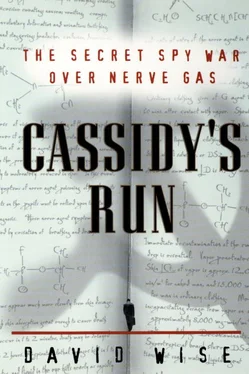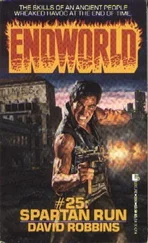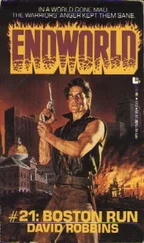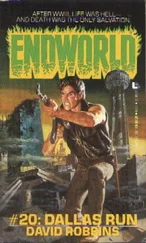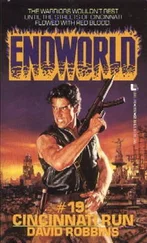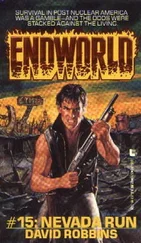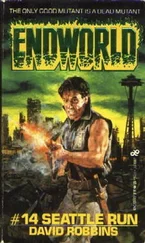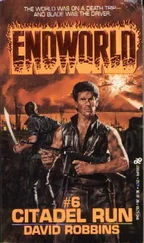Marie Cassidy, too, received an award from the FBI, a gold plaque that read simply: “Marie Cassidy, in appreciation 6/68–9/80.”
Near the conclusion of the ceremony, someone handed Cassidy his Distinguished Service Medal that General Abrams had taken back more than six years earlier at the Pentagon. With a self-conscious smile, Cassidy, now in mufti, posed for pictures holding a case that displayed the DSM, a gold eagle set against a blue background below a broad red-and-white-striped ribbon.
Now, at last, it was his to keep.
CHAPTER: 19
THE TURNING OF IXORA
By late June1978, the FBI had been watching Edmund Freundlich, code name IXORA, the GRU sleeper agent in New York, for almost seven years.
Now that the PALMETTOS had flown back to Mexico, it was possible that the GRU damage assessment would affect IXORA. Although Moscow could not be sure how its operations had been penetrated, it might well choose to play it safe and cut its losses. IXORA could be pulled out of New York.
If the bureau was to make a move, the time to act might rapidly be running out. The decision was made to approach IXORA and try to turn him into a double agent for the United States. That delicate mission was assigned to Special Agent James Kehoe and two other counterintelligence agents in New York City, Jack Lowe and Dan LeSaffre.
In attempting to turn IXORA, however, the bureau was taking a risk. If Freundlich chose to tell his Soviet handlers of the approach, his information would point to Joe Cassidy, who had been told to call Freundlich in case of war. It was possible, of course, that real Russian spies inside the U.S. government had also been instructed to call Freundlich if they detected military preparations for an attack, and in that case the GRU would not be sure that Cassidy was the problem. But, combined with the bureau’s approach to the PALMETTOS, any tip by IXORA to the GRU would certainly have removed any lingering doubt about Cassidy’s real allegiance.
James Kehoe, the case agent for the IXORA operation, was a tall, bespectacled New Yorker, gray haired and balding, and considerably older than the other two agents assigned to make the approach. A Fordham graduate, Kehoe was a veteran counterintelligence agent who had participated in the capture of Rudolf Abel, a KGB colonel who had slipped into the United States as an illegal. Abel, who had posed as a struggling artist in Brooklyn, had been convicted and sent to prison but had been traded in 1962 for the CIA’s U-2 pilot Francis Gary Powers.
Kehoe’s partner, Jack Lowe, had known Powers. Lowe, a big man, blond and heavyset, had grown up in Norton, Virginia, where the U-2 pilot’s father was a cobbler. Lowe had joined the bureau in 1972 and had been assigned to foreign counterintelligence in New York. As it turned out, one of the first drops Lowe covered was Joe Cassidy putting down a hollow rock.
Dan LeSaffre, the third agent, was six foot three and 210 pounds, an athlete and college baseball player from Methuen, Massachusetts. He graduated from Bridgewater State College, south of Boston, joined the bureau in 1972, and had been working in foreign counterintelligence in New York for two years. With LeSaffre at the wheel, the three agents drove to Broadway near West 230th Street, where Freundlich’s car pool usually dropped him off, a few blocks from his apartment.
The three agents, all fairly big men, got out and surrounded IXORA at 5:30 P.M.They flashed their credentials.
“We want to talk to you,” Kehoe said. “We need you to come to our office so we can talk privately.”
Freundlich looked scared to death. “He volunteered to come with us,” Lowe said, “but we were helping him volunteer. We had hold of his arm and were moving him toward the car. In the car, he was visibly shaken. Taking deep breaths, swallowing, hands shaking. He had that ‘Oh shit’ look. A lot of this was fear of the unknown—what’s going to happen to me? When you are doing something over the years, you know it’s wrong and that one day the knock may come on the door.” For IXORA, it had come.
“He thought it was like what he had experienced in Europe. It took us a while to explain to him that we weren’t going to kill him. We weren’t going to harm him. We just wanted his cooperation.”
The FBI men drove Freundlich to the bureau’s office in Manhattan at 201 East Sixty-ninth Street. For maximum psychological effect, they took him upstairs to the offices of the special agent in charge. “We took him to the executive conference room outside the SAC’s office, a very official-looking place. We began to talk to him. There was no video, no tape running.”
The counterintelligence men knew this game very well. IXORA was trapped and fearful. “He is wondering was he caught because of something he did?” The agents painted a grim picture for Freundlich: The Soviets would never trust him now; they might even assassinate him.
Then the agents offered IXORA a lifeline. “Part of the conversation was to put him at ease, to show him there was a way out,” Lowe said. “We’ll protect you. There is a way out. We need to know the details.”
As the evening wore on, gradually IXORA began to cooperate. “He said he had done some things for the Soviets, but not bad things. The turning took several months. It was a slow process over time—he did not tell us everything all at once.”
Freundlich revealed astonishing details. If he received a warning that a nuclear attack was imminent, he was to flash the word to the Russians from a vantage point in the very heart of New York City.
“He was given a radio that worked and played music,” Lowe said. But it was no ordinary radio. “When he got a call warning of military preparations, then he was to go to Sixty-eighth Street and Fifth Avenue. Just inside the wall of Central Park, there was this huge rock. He was to climb up on the rock, take out the radio, and open the back.” [1] The rock, as big as a house, is located to the north of a playground in an area of the park known as “The Dene,” a British term for a dune or sandy area near the seashore. The rustic shelter that sits atop the rock formation now was not there at the time that IXORA was active.
Under the rear panel of the special radio were buttons that activated a tiny transmitter concealed inside. It broadcast to the Soviet mission to the United Nations a few blocks away on East Sixty-seventh Street between Third and Lexington avenues. “He had a choice of one of five buttons. He would push the button that matched the number in the parol.”
The radio buttons were in sequence, numbered 11, 22, 33, 44, and 55. If, for example, Joe Cassidy placed an order for twenty-two books, as he did early in May 1972, Freundlich would push the 22 button on the radio. Since the double-digit numbers signified single digits, his call warned of a military action in two days. [2] IXORA told the FBI that he had once sent a signal from the Central Park rock, but that he could not remember the date or the circumstances. Oddly, and for reasons IXORA never explained, he did not transmit from the rock after he received the warning call from Cassidy in May 1972; the watching FBI agents saw him go straight to a dead drop. After Freundlich began cooperating with the FBI in 1978, he was not asked why he had failed to go to the rock; the bureau did not want to compromise Operation SHOCKER by revealing to IXORA that it knew about the call.
IXORA was instructed to back up the signal he transmitted by placing a message in a dead drop. He could not show the radio to the FBI, because he no longer had it; he had returned it to the Soviets at their request.
The radio and the signal procedure posed some intriguing questions for the FBI’s counterintelligence analysts. Was there an unknown number of real Russian spies out there? Or were there other sentinels in the United States like IXORA, with the identical mission, each outfitted with the same type of radio?
Читать дальше
